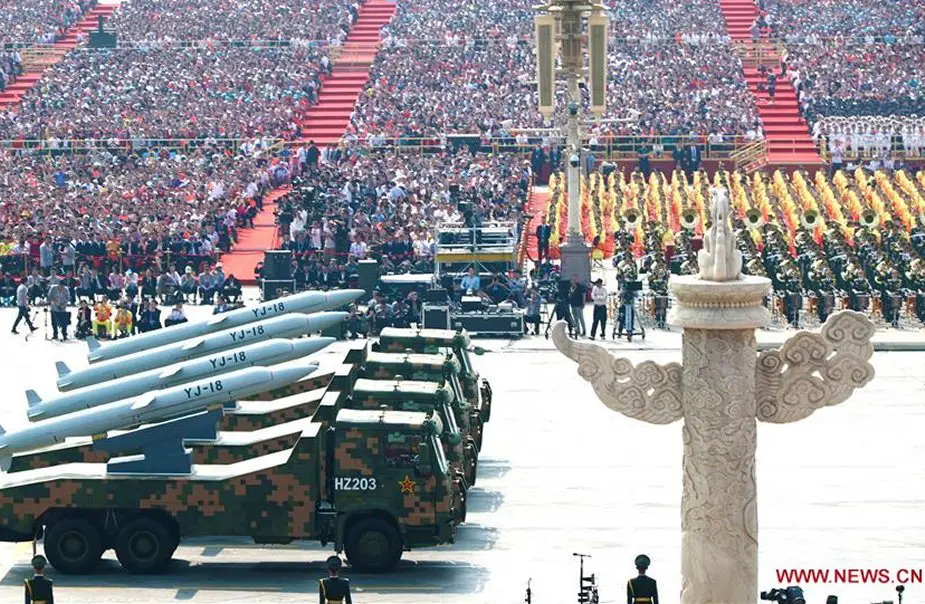Breaking news
Anti-ship missiles and Ship-borne air defense system unveiled at Chinese military parade.
A variety of shore-to-ship missiles, ship-to-ship missiles, "YJ-18/18A" as well as the latest ship-borne air defence weapons "HHQ-9A" were shown as part of the naval battle group formations that marched through Beijing's Tian'anmen Square in a military parade marking the 70th founding anniversary of the People's Republic of China on Tuesday.
 YJ-18 and YJ-18A Beijing's latest anti-ship cruise missiles (Picture source: China Military)
YJ-18 and YJ-18A Beijing's latest anti-ship cruise missiles (Picture source: China Military)
The long-range submarine-launched and ship-based missiles are domestically designed and built, and they are the mainstay of the Chinese People's Liberation Army Navy's anti-ship deterrence force.
YJ-18 and YJ-18A are Beijing's latest anti-ship cruise missiles. Being paraded for the first time, the two missiles can be launched from submarines as well as ships. They have been described as China's 'secret weapons' for naval warfare. Both missiles can be launched vertically from vessels and travel as fast as three times the speed of sound, it is claimed. YJ is the acronym for 'eagle strike' in Chinese.
The YJ-12B shore-to-ship missiles, which made their debut in China's military parade, can hit large and-medium-sized ships and play an important role in China's coastal defence system. An upgraded version of YJ-12 supersonic anti-ship missile, YJ-12B boasts a maximum range of 310 miles and could be stationed in remote islands, such as those in the South China Sea. China claims that the missile can sink medium to large vessels during surprise attacks and will serve as a cornerstone for the country's naval defence system.
Meanwhile, featured air defence, HHQ-9B, HQ-16, HQ-10 missiles and the Phalanx close-in weapon systems support naval and land battle groups. Description: The HHQ-9A is a shipborne air defence system introduced by the Chinese People's Liberation Army Navy (PLAN) on the Type 052C destroyer in 2004. The system is based on the HQ-9A mobile air defence system fielded by the People's Liberation Army beginning in 1997. The HHQ-9A ship-mounted phased array radar antennas look like the SPY-1 antennas installed on the US Navy Aegis-equipped destroyers and cruisers. The HHQ-9A can track as many as 100 airborne targets while engaging 50 of them simultaneously.
The HHQ-9A missile system provided to Type 052C destroyers has eight six-cell Vertical Launch Systems (VLS) with six of them at the bow deck and the remaining two at the stern. The Chinese designed VLS features a cylindrical shape and "cold launch" in comparison with Western VLS such as Mk-41 and Sylver which are rectangular and use "hot launch". The main difference between cold and hot launches is that the rocket motor ignites out or in the launch tube. The Chinese VLS is neither based upon the Russian revolver launch system also featuring six-cell.


























